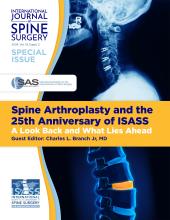To the Editor: We greatly enjoyed the study by Wood et al,1 which showed that public policy plays a crucial role in shaping transportation safety, particularly concerning vulnerable road users such as moped riders. Wood et al examined the impact of South Carolina’s 2018 policy mandating moped registration and its association with traumatic spinal injuries. While the study provides valuable insights, several methodological and conceptual limitations must be addressed to ensure a more comprehensive understanding of the policy’s implications.1
Limitations
Data Scope and Generalizability
One significant issue with the study is its reliance on data from a single level 1 trauma center to assess moped-related spinal injuries. Epidemiological studies require broader, population-based data to generate accurate incidence rates.2 Hospital-based datasets may introduce selection bias, as not all moped-related injuries necessitate hospitalization at a level 1 trauma center. Consequently, the study likely underestimates the true burden of spinal injuries across South Carolina.
Future research should integrate statewide crash registries to enhance the validity of findings. Additionally, seasonal variations and regional differences in moped usage must be considered, as they significantly influence injury trends. Underreported injuries also limit the study’s generalizability.3
Inconsistencies in Vehicle Classification
A critical issue in the study is the inconsistency in defining the types of vehicles analyzed. The introduction references both mopeds and electric scooters, yet the latter is not explicitly included in the title, methodology, or findings. This ambiguity weakens the study’s internal consistency.4
Electric scooters and mopeds differ in speed capacities, safety features, and risk factors, making it essential to distinguish between them for precise risk assessment. Research suggests that electric scooters, which generally operate at lower speeds, tend to result in less severe spinal injuries than mopeds. Furthermore, speed limits of 30 km/h (about 20 mph) have been shown to significantly reduce road traffic crashes.5 The study fails to examine whether additional traffic enforcement measures, such as speed regulation, contributed to the observed reduction in injuries after policy implementation.
Causal Inferences and Policy Implications
While Wood et al suggest that the 2018 policy led to a reduction in traumatic spinal injuries, the study does not establish a clear causal relationship. It remains uncertain whether the decline in injuries is attributable to decreased moped ridership, improved safety behaviors, or heightened law enforcement. Without controlling for ridership trends and enforcement patterns, attributing injury reductions solely to the policy change is premature.6
Future studies should incorporate data on rider volumes, police enforcement activity, and hospital admission trends to substantiate causal claims. Additional factors, such as road infrastructure improvements and helmet laws, should also be considered as potential contributors to injury reduction.5
The Role of Law Enforcement
The study notes that nearly half of the moped drivers stopped by police were under the influence of alcohol, a significant factor in road safety. Research consistently shows that increased police enforcement correlates with reduced road traffic crashes and injuries.7 However, the study does not specify whether law enforcement activity increased following policy implementation. If heightened police patrols contributed to fewer impaired riders, this factor may have played a significant role in the observed injury decline rather than the policy itself.
Terminology: “Crash” Vs “Accident”
Terminology in transportation research carries critical implications for public perception and policy framing. Researchers use the term “accident,” which is increasingly discouraged in favor of “crash,” as recommended by the National Highway Traffic Safety Administration.1 The term “accident” implies an unforeseeable event, whereas “crash” acknowledges that most traffic incidents are preventable. Adopting modern crash-related terminology would improve the study’s alignment with best practices in public safety communication.
Ethical Considerations
Although the study provides valuable quantitative insights, it lacks an exploration of the human experiences behind the statistics. Understanding the lived experiences of moped riders could offer valuable context to the policy’s impact. Incorporating qualitative methodologies, such as rider surveys and interviews, would provide deeper insight into behavioral changes after legislation.8
Additionally, potential biases related to self-reported injury severity and police documentation inconsistencies should be acknowledged as study limitations. Addressing these limitations would contribute to a more nuanced understanding of the effects of the policy.
Conclusion
The researchers contribute to the discussion on moped safety and public policy effectiveness; however, several methodological limitations reduce the study’s epidemiological reliability.1 Addressing issues related to data scope, vehicle classification, and causal inferences would enhance the robustness of future research.
Additionally, aligning with contemporary crash-related terminology and incorporating qualitative perspectives would strengthen the study’s policy implications. Policymakers should consider these factors when evaluating road safety measures to ensure that interventions are data driven and comprehensive and effectively address the risks associated with moped use.
Footnotes
Funding The authors received no financial support for the research, authorship, and/or publication of this letter.
Declaration of Conflicting Interests The authors report no conflicts of interest in this work.
- This manuscript is generously published free of charge by ISASS, the International Society for the Advancement of Spine Surgery. Copyright © 2025 ISASS. To see more or order reprints or permissions, see http://ijssurgery.com.







